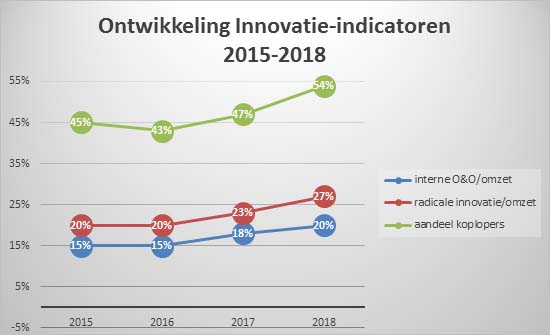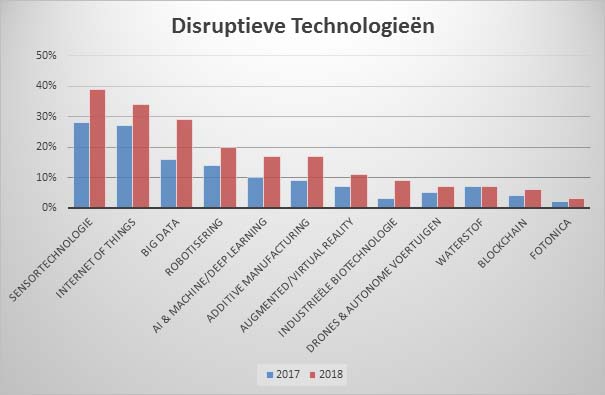SMEs in the Northern Netherlands embrace innovation

Enterprises in the Northern Netherlands innovated plentifully in 2018 This has been revealed by the Northern Netherlands Innovation Monitor, an initiative of the Centre of Expertise Vinci of the University of Groningen (UG) in collaboration with the Northern Netherlands Provinces Alliance (SNN). ‘These are numbers that the northerners should be proud of, and they suggest that a beautiful future is to be expected’, says UG researcher Dr Thijs Broekhuizen.
Similar to previous years, all innovation input indicators are clearly positive. In 2018, enterprises invested measurably more in internal Research & Development and made more use of disruptive technologies. This has had a visible effect on the innovation output achieved, concludes Broekhuizen. Innovations that are new to the market are forming an increasingly important contribution to turnover. The most important achievement: 2018 does not appear to be an outlier as such. The increased attention to innovation in the North is structural.
Innovation activities and performances: a positive trend
Over the last four years, UG researchers have taken an annual look at the innovative powers of small and medium-sized enterprises. The monitor indicates a clearly positive trend. The proportion of SMEs that invest and innovate by themselves, so-called frontrunners, has risen from 45% in 2015 to 54% in 2018. In addition, the importance of radical innovation, in which SMEs are the first to implement product or service innovations in the market, has also increased. More than a quarter of turnover is realized through these radical innovations.

More attention to disruptive technologies
Compared to 2017, an increase in the percentage of companies that actively used disruptive technologies was visible in 2018. The technologies most often used by the enterprises were sensor technology (39% in 2018, 28% in 2017), followed by the Internet of Things (34%, previously 27%), Big Data (28%, previously 16%), Robotization (20%, previously 14%) and Artificial Intelligence, Machine Learning and Deep Learning (17%, previously 10%). Although the use of these technologies does not directly lead to higher profitability, it suggests that the enterprises are daring to experiment and prepare themselves for a changing future.

More information
Contact: Thijs Broekhuizen
________________________________________________
> More news from the Faculty of Economics and Business
> FEB experts in the media


| Last modified: | 29 February 2024 10.02 a.m. |
More news
-
02 May 2024
Johan Remkes te gast in podcast Leiderschap in Onzekere Tijden Live
Oud-minister en oud-informateur Johan Remkes is op 15 mei te gast in de Podcast Leiderschap In Onzekere Tijden. In de liveopname van de podcastaflevering gaat hij met FEB-hoogleraren Janka Stoker en Harry Garretsen in gesprek over de huidige...
-
29 April 2024
The Maddison Project: New 2023 Update Illuminates Origins of Modern Economic Growth
In a new update of the renowned Maddison Project Database, economic historians shed new light on the genesis of modern economic growth.
-
29 April 2024
Guido Berends and Hylke Dijkstra win FEB Research Awards 2023
The awards for best PhD thesis and best graduate of the research master were presented at the annual PhD conference held on April 18. Guido Berends won the Best PhD Thesis Award 2023 and Hylke Dijkstra won the Research Master Graduate Award 2023.
